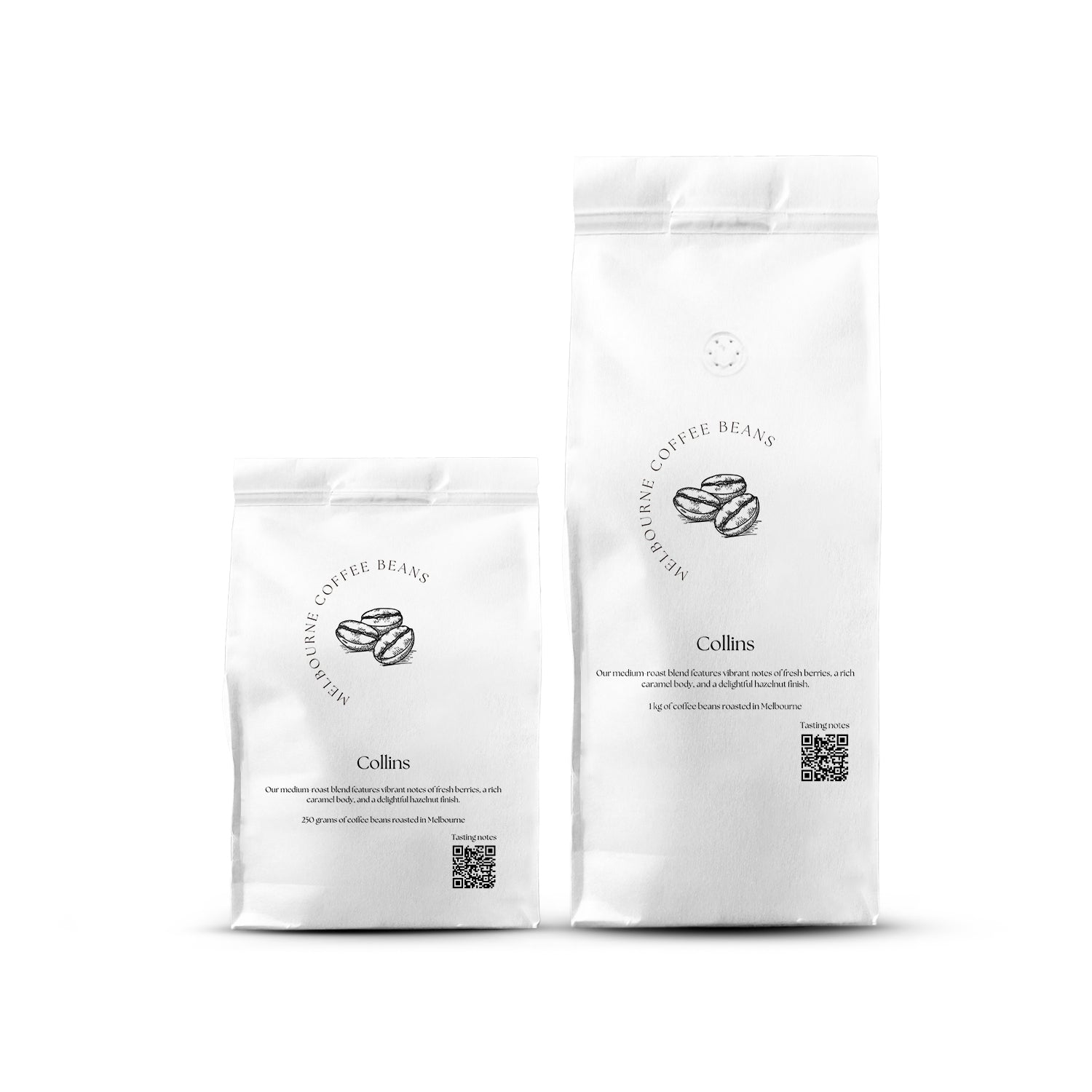Ever wondered where those aromatic coffee beans in your morning cup come from? As a cafe owner and coffee enthusiast from the sunny Gold Coast, I've had my fair share of conversations about the origins of our beloved brew. Coffee's got quite a journey before it ends up in your coffee machine, and today we're going to explore every step of that adventure.
Key Takeaways
- Coffee beans originate from the coffee plant, specifically the species Coffea arabica and Coffea robusta.
- The beans we brew are actually seeds found inside coffee cherries, which grow on coffee trees.
- The journey from farm to cup involves growing, harvesting, processing, exporting, roasting, and finally, brewing.
Historical Origins of Coffee
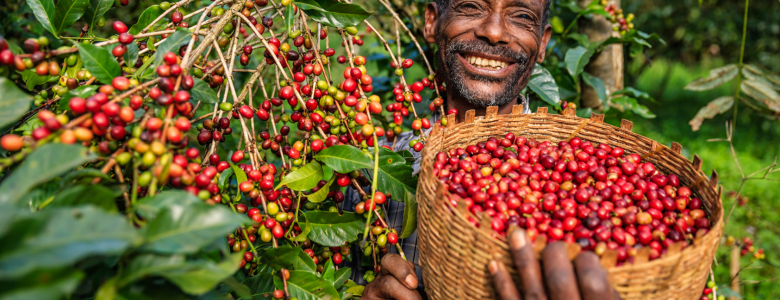
The story of coffee begins in the ancient coffee forests of Ethiopia, where the coffee plant, Coffea arabica, is believed to have originated. Coffee cultivation and trade began on the Arabian Peninsula. By the 15th century, coffee was being grown in the Yemeni district of Arabia, and in the 16th century, it was known in Persia, Egypt, Syria, and Turkey.
Coffee began spreading through the Middle East, with coffee houses popping up in major cities. Coffee houses quickly became popular and were called "Schools of the Wise" due to their role in fostering intellectual conversation. These coffee houses not only served a delicious cup of coffee but also became centres for the exchange of information.
The Legend of Kaldi and the Dancing Goats
Legend has it that coffee was discovered by a goat herder named Kaldi. He noticed his goats prancing about like they were at a bush doof after munching on some mysterious red berries. Curious, Kaldi tried the berries himself and felt a sudden burst of energy.
He shared his findings with a local monastery, where monks made a drink with the berries and found it helped them stay awake during long hours of prayer. And just like that, the first delicious cup of coffee wasn't far behind!
Primary Coffee-Producing Regions
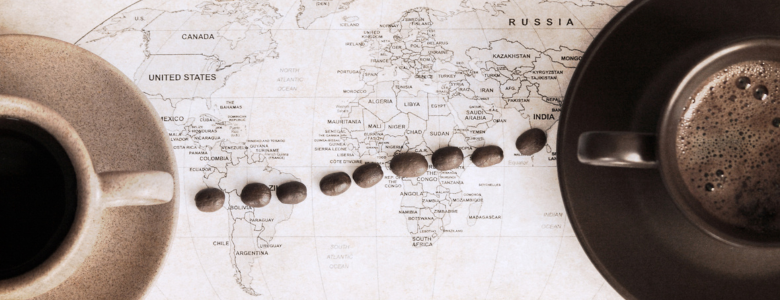
So, where do coffee beans come from? Most coffee plants thrive in what we call the "Coffee Belt" or "Bean Belt." This region around the equator has tropical climates that provide the perfect conditions for coffee plants to grow and produce fruit.
Here are the top coffee producers that contribute unique flavours to the global coffee market.
South America
South America is the leading region with coffee farms producing a variety of coffee beans, known for their diverse flavours ranging from nutty and sweet to bold and chocolaty. Brazil, in particular, is responsible for about a third of the world's coffee production. Colombia's not far behind, known for its high-quality Arabica beans.
These countries have the perfect combo of altitude, climate, and soil to grow top-notch coffee beans.
Africa
Africa's where it all began. Ethiopia, the original home of Arabica coffee beans, still produces some of the most complex and flavourful beans you'll ever taste—fruity and floral notes. Kenya's beans are known for their bright acidity and full-bodied taste, and Tanzania is famous for its peaberry coffee beans.
Asia
Asia has some ace coffee-growing regions, too. Vietnam is the world's second-largest coffee producer, mainly producing Robusta coffee beans. Indonesia, particularly regions like Sumatra and Java, produces coffee with earthy, full-bodied flavours that are a hit with coffee connoisseurs.
Indian coffee, on the other hand, is noted for its mild acidity and full-bodied flavour, often grown in the shade to enhance its unique characteristics.
Central America
Central America's another top spot for coffee farming. Countries like Costa Rica, Guatemala, and Honduras produce some of the highest-quality beans in the world. Guatemalan coffee is known for its rich, chocolatey taste with hints of spice. Costa Rican coffee is often bright and acidic with a well-balanced body, while Honduran coffee is celebrated for its sweet and mild flavour.
Coffee Growing in Australia
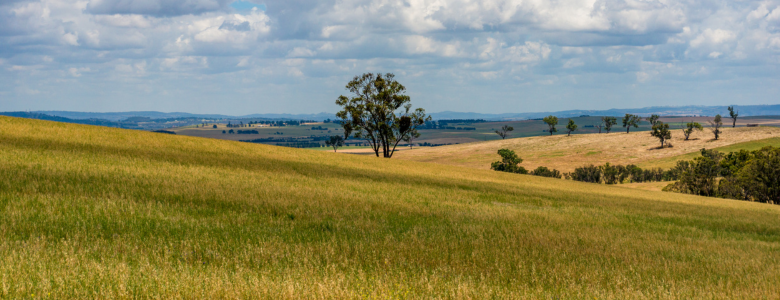
Now, let's talk about our own backyard. While we're not in the traditional coffee belt, Australia's been growing some high-quality coffee beans of our own.
Coffee production in Australia began in the late 19th century but really took off in the 1980s and '90s. Today, coffee farms are scattered along the east coast, from the Atherton Tablelands in Far North Queensland to Northern New South Wales.
Our coffee industry might be small compared to the big global players, but we're producing some top-notch beans! Australian coffee is known for its clean, sweet taste and low acidity. The unique growing conditions here, including our rich volcanic soils and high altitudes, contribute to the distinct flavour profile of Aussie coffee.
Most of our coffee plants are of the Arabica variety, with popular cultivars including K7, SL34, and Bourbon. While we can't compete with the volume of coffee giants like Brazil, our focus is on high-quality, specialty coffee that can hold its own against the world's best.
For those considering how to open a cafe, understanding how our coffee industry works is crucial to offering an exceptional coffee experience.
Famous Coffee Varieties and Their Origins

When it comes to coffee species, there are two main players: Arabica coffee beans and Robusta beans.
Arabica coffee accounts for about 60-70% of the world's coffee production and is generally considered to produce higher-quality beans with more complex flavours. Robusta, on the other hand, is harder, more disease-resistant, and packs a stronger caffeine punch than Arabica beans.
Arabica coffee plants originated in Ethiopia and are now grown in various parts of the world, including Central and South America, Africa, and Asia. Some famous Arabica varieties include Typica, Bourbon, and Geisha.
Robusta coffee beans primarily come from Africa and Indonesia. They're often used in instant coffee and espresso blends for their strong flavour and crema-producing qualities.
Other Popular Types of Coffee Beans and Their Origins
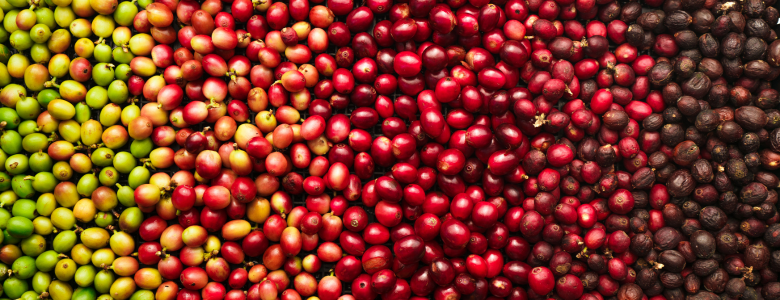
Coffee grows in different regions. Here are some of the most famous coffee beans grown and used in most cafes today:
-
Typica
- Origin: Ethiopia
- Known for: Being the base variety from which many other Arabica coffee plants have mutated or been bred.
-
Bourbon
- Origin: Island of Bourbon (now Réunion)
- Known for: Its sweet, complex flavours with good body and acidity.
-
Geisha (Gesha)
- Origin: Ethiopia, popularised in Panama
- Known for: Its distinct floral and jasmine-like aroma with a unique, complex flavour profile.
-
SL28 and SL34
- Origin: Kenya
- Known for: Their high quality and resistance to drought, producing coffee with bright acidity and fruity notes.
-
Pacamara
- Origin: El Salvador
- Known for: Its large bean size and balanced flavour profile with hints of chocolate and fruit.
-
Caturra
- Origin: Brazil
- Known for: Its bright acidity and lower yield compared to other varieties, with a clean and crisp cup profile.
-
Maragogipe (Elephant Bean)
- Origin: Brazil
- Known for: Its very large beans and mild, slightly floral flavour.
-
Sumatra
- Origin: Indonesia
- Known for: Its full body and low acidity, often with earthy and herbal notes.
-
Kona
- Origin: Hawaii, USA
- Known for: Its smooth, rich flavour with a hint of nuttiness and fruitiness, grown on the slopes of Mauna Loa.
-
Yirgacheffe
- Origin: Ethiopia
- Known for: Its bright acidity, floral notes, and citrusy flavours, often considered some of the best coffee beans in the world.
-
Blue Mountain
- Origin: Jamaica
- Known for: Its mild flavour, bright acidity, and creamy body, often considered one of the most balanced coffees available.
The Growth Cycle of Coffee Beans
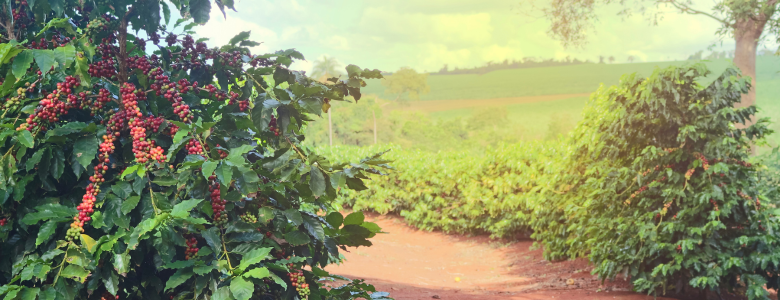
You might be wondering how coffee beans are grown today. Let's take a quick overview of their journey before they reach your coffee machine.
- Planting Coffee Seeds: Coffee plants start as seedlings in shaded nurseries and take about 3-4 years to bear fruit. They require specific conditions to thrive, including well-drained soil, consistent rainfall, and a stable climate. Once the seedlings are strong enough, they are transplanted to the coffee farm.
- Coffee Tree Development and Maturation: Once mature, these evergreen coffee shrubs or small trees produce white, jasmine-like flowers that eventually give way to coffee cherries. These cherries start green, then turn yellow, and finally ripen into a deep red or purple fruit. Inside each cherry, you'll typically find two coffee beans nestled together.
- Fun fact: sometimes there's only one round bean instead of two halves - we call these "peaberries", and they're considered quite special!
- Harvesting Coffee Bean: The cherries are usually harvested once a year, although some regions can produce two crops annually. Most coffee farmers hand-pick the cherries to ensure only the ripest fruit is harvested.
The Role of Climate and Soil in Coffee Bean Quality
Now, if you want to produce top-notch coffee beans, you've got to pay attention to the environment.
Most coffee plants grow best at high altitudes, between 1,000 and 2,000 meters above sea level. The higher the altitude, generally, the better the coffee bean quality, as the slower growth allows more time for flavour development.
Coffee beans love areas with lots of rain, warm temperatures, and high humidity.
Soil plays a massive role, too. Coffee plants thrive in rich, well-draining soils. That's why some of the best coffee beans come from volcanic regions—the soil is packed with nutrients!
Processing Coffee Beans: From Cherries to Green Beans
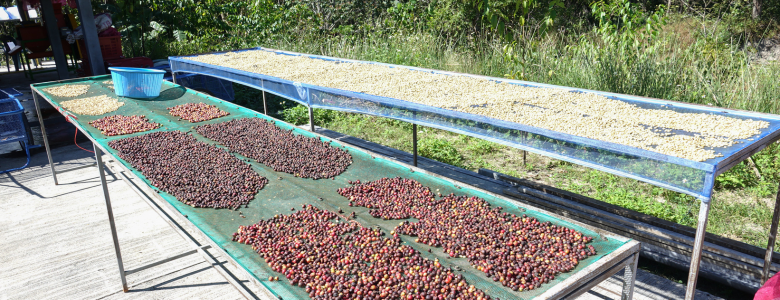
Once the coffee cherries are harvested, the real work begins. There are three main processing methods: washed (or wet), natural (or dry), and honey processing.
- Wet processing involves removing the pulp from the coffee cherry before drying the beans. This method tends to produce cleaner, brighter flavours.
- In dry processing, the whole cherry is dried in the sun before the beans are removed. This can result in more complex, fruity flavours.
- Honey processing is a bit of a hybrid - some of the cherry pulp is left on the bean during drying, potentially leading to sweeter, more full-bodied coffee.
- After processing, we're left with green coffee beans, ready for export.
Exporting and Trading Coffee Beans

The coffee trade is a global business, with green coffee beans travelling far and wide before reaching coffee roasters. Coffee producers often sell their beans through cooperatives or at auctions. From there, importers and traders get involved, moving the beans around the world.
Australia imports most of its green coffee beans, although our homegrown industry is steadily growing. As a cafe owner, I love supporting local growers when I can, but I also enjoy bringing in beans from traditional coffee-growing regions to offer my customers a diverse range of flavours.
Roasting and Its Impact on Flavour

The final step before brewing is roasting. This is where green coffee beans are transformed into the aromatic brown beans we all know and love. The roasting process is crucial in developing the complex flavours in coffee.
During coffee bean roasting, the beans undergo chemical changes as they're heated. Roasted coffee beans lose moisture, change colour, and develop their characteristic flavour. The degree of roast - from light to dark - can significantly impact the final taste of the coffee.
Light roasts tend to preserve more of the bean's original flavours, while dark roasted beans develop more intense, caramelised notes. As a barista, choosing the right roast level is key to bringing out the best of different coffee beans.

Summary
So there you have it, coffee lovers - the incredible journey of coffee beans from their origins to your cup. It's a complex process involving careful cultivation, precise harvesting, meticulous processing, and skilful roasting. Next time you're enjoying a delicious cup of coffee, take a moment to appreciate the incredible journey those beans have been on!
Frequently Asked Questions
Where do coffee beans originate?
Coffee originates from Ethiopia, where Coffea arabica plants were first discovered growing wild in the forests.
Where do coffee beans naturally grow?
Coffee beans grow in tropical and subtropical regions around the equator, in an area known as the "Coffee Belt" or "Bean Belt".
What tree do coffee beans come from?
Coffee beans come from the Coffea plant, which can grow as a shrub or small tree. The two main species are Coffea arabica and Coffea canephora (Robusta).
Do coffee beans come from cherries?
Yes, coffee beans are actually the seeds found inside coffee cherries, which are the fruit of the coffee plant.
